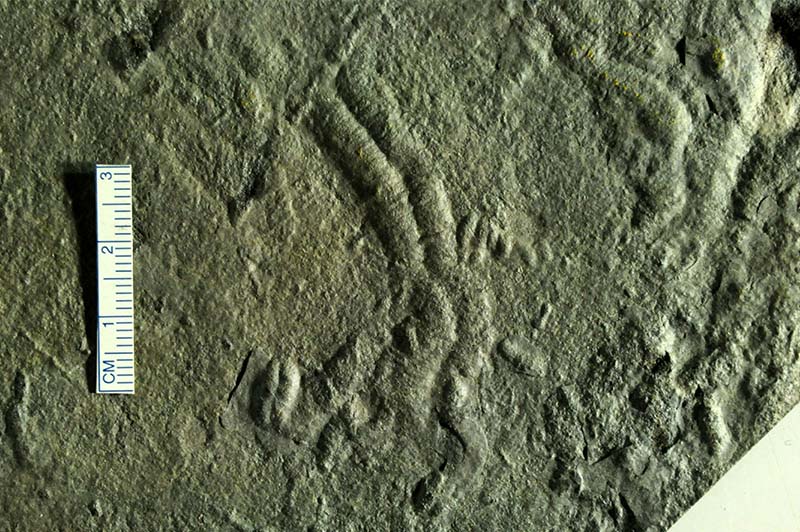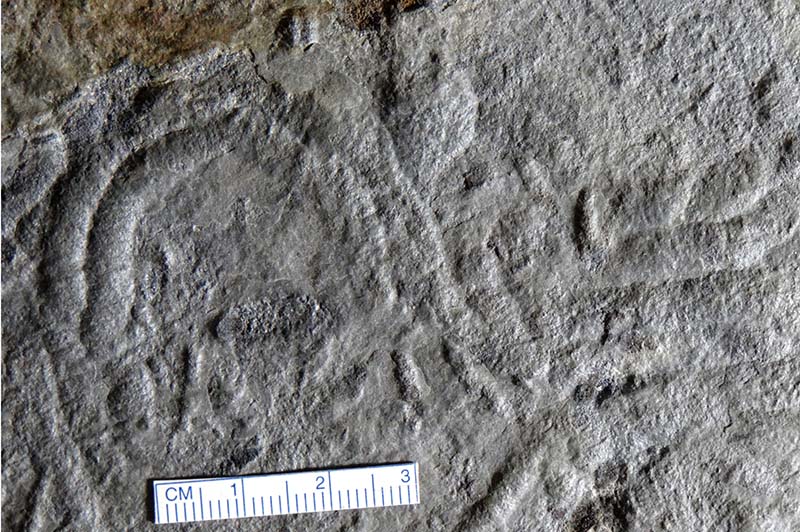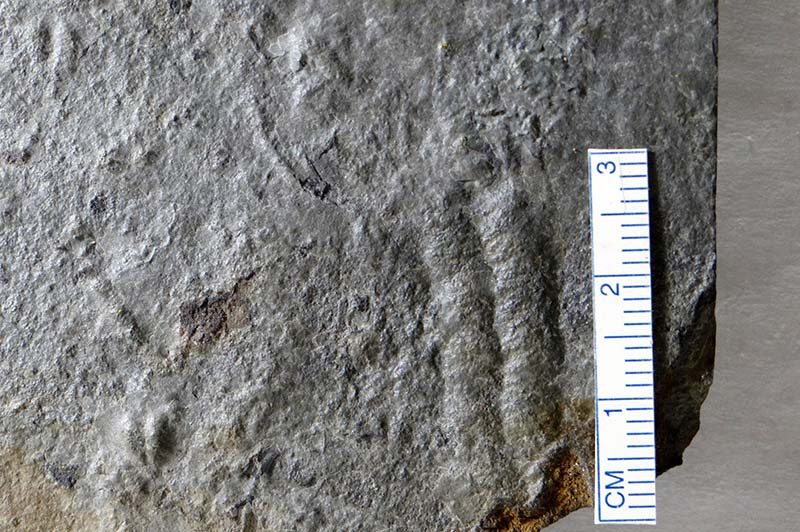Cruziana d’Orbigny, 1842
DESCRIPTION: Elongate, bilobate ribbon-like furrows with medial ridges (concave epirelief) or medial grooves (convex hyporelief) and furrows are covered by a herring-bone-like, transverse, to sublongitudinal striations.
BEHAVIOR(S): Repichnia (locomotion), fodinichnia (deposit feeding); Crawling trail, dwelling, or feeding burrow, or digging trace of a deposit-feeding organism.
ENVIRONMENTAL SETTINGS: Shallow to deep marine settings and some freshwater deposits.
POSSIBLE TRACEMAKERS: Trilobites, arthropods, and branchiopods (shield shrimp).
GEOLOGIC RANGE: Cambrian–recent
ADDITIONAL REFERENCES: Bromley and Asgaard 1979, Fillion and Pickerill 1990, Hammersburg et al. 2018.
REMARKS:Trilobites produced Cruziana up until the end Permian. After the Permo-Triassic extinction, Cruziana was produced by marine arthropods and freshwater arthropods. Zonneveld et al., 2002 described Cruziana-like burrows constructed by crustaceans that may better be placed within Reniformichnus (Bordy and Krummeck 2018). Isopodichnus has been regarded as a junior synonym of Cruziana or Rusophycus.


